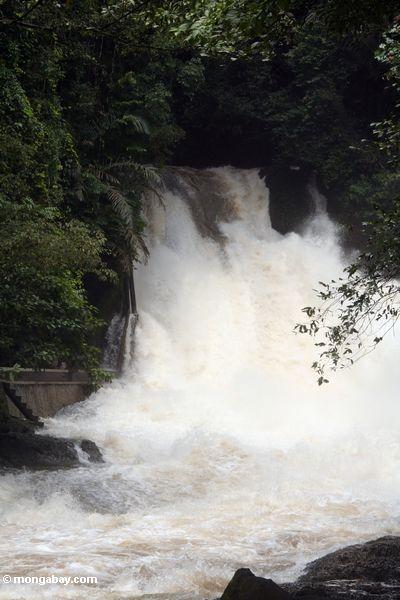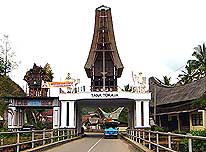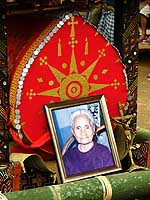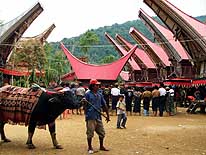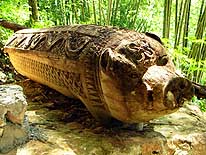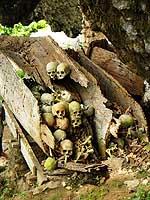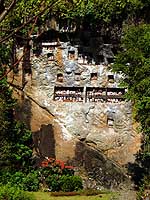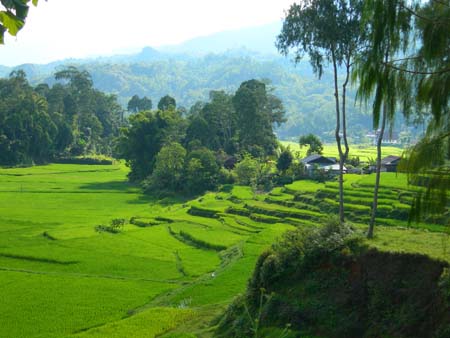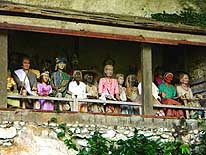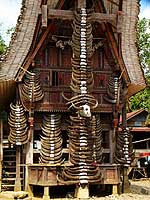Wakatobi National Park
12:37 PM
Wakatobi (an acronym for the main islands Wangi-Wangi, Kaledupa, Tomia and Binongko), is a renowned dive destination, featuring pristine and diverse reefs. The main islands have fringing coral reefs. It is located on South East Sulawesi, Indonesia. Wakatobi National Park has very high marine resource potential, in terms of both species and uniqueness, with enchanting submarine landscapes. In terms of configuration, the marine waters of the park generally start flat and then slope seawards, with sheer precipices in some parts. The water depth varies, the deepest parts reaching 1,044 metres with sand and coral at the bottom. This Park has 25 chains of coral reefs, and the total circumference of the coral islands is 600 km. The National Park includes an area of 1,390,000 hectares.

Reefs:
- Karang Kapota situated ca. 20 km Southwest of Wangi-wangi (ca. 20 km long
and 8 km wide),
- Karang Keledupa situated ca. 20 km Southwest of Kaledupa and Tomia (ca. 60
km long and 20 km wide),
- the atoll-like reef situated just Southwest of Tomia Island that includes Lintoa
island (ca. 15 km long and 15 km wide).
A number of smaller reefs, mostly atolls, are situated in the open waters of the Southeastern part of Wakatobi. The Park is inhabited by ca. 85,000 people, whereof about half live in Wangi-Wangi. Many of these people depend on fisheries, but a significant portion also makes a living as inter-island traders and seafarers. Fishing is common throughout the Park, and there are frequent reports on destructive fishing practices being used. There are two main tourism hubs in the park namely, Tomia Island and Hoga in Kaledupa Island.

The national park authority, PHKA, expressed a commitment to conserve these reefs by declaring the 1.39 million ha of waters around the islands as a protected area, Wakatobi National Park (TNKW, Taman Nasional Kepulauan Wakatobi) on July 30 1996 (Surat Keputusan Menteri Kehutanan No. 393 / Kpts-VI/1996). There is an endorsed zoning plan (Surat Keputusan Direktur Jenderal Perlindungan Hutan dan Pelestarian Alam No. 198/Kpts/DJ-VI/1997) that includes core zone, protection zone, use zone, traditional use zone, and rehabilitation zone. TNKW plans to revise the zoning plan to allow for socio-economic dynamics To date, Park management has not been effective because of problems faced by most Parks in Indonesia: lack of funding, lack of experience with marine conservation, and Indonesia’s social, economic and political crisis.
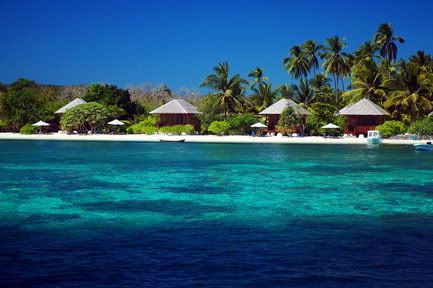
Best visit :
April to June dan October to December.
How to get here:
From Jakarta you would transit in Kendari (Kendari is the capital of the Indonesian province of South East Sulawesi) afterwards it was continued to Bau-bau, will take up time around 5 hours if using speed boat or 12 hours if using traditional boat. From bau-bau to Lasalimu using car for two hours, then using the speed boat of Lasalimu-Wanci for one hour or the wood ship of Lasalimu-Wanci for 2.5 hours. Wanci was the first main gate entered the Wakatobi National Park region.



